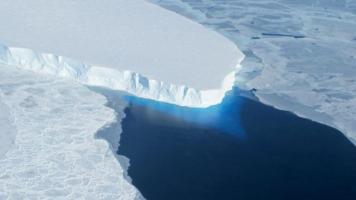ERAscience board member Michael MacCracken explores the possible reversal of climate change impact on Antarctica.

In an interesting article for US News and World Report, Michael MacCracken, ERAscience board member and Chief Scientist for Climate Change at the Climate Institute in Washington, explores the possible reversal of climate change impact on Antarctica.
Technology to the Planet's Rescue?
It's time to explore whether geoengineering can reverse Antarctic ice loss.
Research from NASA released on May 12 suggests that a large section of the West Antarctic ice sheet is now on a path, perhaps irrevocably, to collapse. The result could be billions of tons of ice poured into the Southern Ocean each year. This could lead, over the span of coming decades and centuries, to as much as 10 feet of global sea level rise, attributable to this event alone.
Sea level rise of this magnitude, even spread over a long timescale, will be extremely disruptive and likely dangerous for human societies, with the worst and highest costs falling on those who are least able to bear them.
What can be done? The first choice would be an immediate halt to all global greenhouse gas emissions, which would help to slow sea level rise generally. Given the difficulty and seeming impracticality of that, it bears asking, could some sort of large-scale technological intervention in the region help to slow the calving away of the ice? While the shape of the underlying ocean bottom that no longer will hold back the ice stream is a critical contributor to the vulnerability of the ice sheet, there are, conceptually, a number of ways by which human intervention could reduce regional Antarctic warming, perhaps with the potential to slow the movement and loss of ice.
One possible option would be to increase the reflectivity of clouds over the Southern Ocean during the sunlit season, thus reducing ocean heat uptake. Models suggest that, in areas that are fairly clean, injection of finely misted salt water, targeted regionally, could increase the amount of solar radiation reflected back into space.
Another way to possibly bring about a localized cooling effect might be to inject reflective microbubbles into the frigid Antarctic waters, brightening the surface in the way that ship wakes brighten the waters, but doing so more efficiently.
Two other interventions could, potentially, encourage more rapid radiation of absorbed heat to space. One way to release heat trapped in the oceans could be to use icebreaking ships to open up selected areas of the ocean during the winter, allowing heat otherwise contained beneath the sea ice to escape to the atmosphere. Another option that has been proposed would be to use cloud-seeding techniques to thin out the high-altitude, winter layer of cirrus clouds, allowing heat radiated from the ocean’s surface to more readily pass into space.
Now, such ideas are highly speculative, at best. In fact, it’s easy to write them off as the stuff of science fiction. They are, though, among the kinds of climate geoengineering proposals that have been suggested as bottom-of-the-barrel approaches to limiting the increasingly severe impacts of climate change, perhaps, in the best case scenario, buying time for the growth in global emissions of carbon dioxide to be stopped and then reversed. Such geoengineering approaches are not a long-term solution and have limited potential, but they may be able to temporarily limit some of the worst impacts of climate change while actions are taken that cut through political and societal dithering around seriously addressing the increasing risks of climate change.
On the same day that that the world learned of the potential for runaway Antarctic ice melt, Sen. Marco Rubio, R-Fla., spoke for many conservative politicians when he declared, “I don't agree with the notion that some are putting out there, including scientists, that somehow, there are actions we can take today that would actually have an impact on what’s happening in our climate.” The day then closed with the announcement that the U.S. Senate, because of political wrangling over the Keystone XL pipeline, appears unable to pass a straightforward energy efficiency bill that has bipartisan sponsorship.
While these kinds of political and social intransigence seem to be making climate geoengineering technologies increasingly attractive, such approaches are not a long-term panacea, and they are, for good reason, controversial.
For one thing, it is unclear whether the kinds of ideas proposed above are technically feasible at the kind of scale that would make a difference in and around Antarctica. Nor is it clear that creating a solar shield could bring about a rapid and sufficient enough cooling of the ocean waters to slow the warming of the Antarctic ice streams that are so concerning to NASA scientists.
At the same time, there are thorny governance and justice issues presented by any geoengineering scheme. Who gets to control the technology and decide how and to what ends it is used? What if the talk of a technological response to Antarctic ice melt distracts attention from the greenhouse gas reduction efforts that the world so desperately needs? Such questions broach no easy answers.
Given the complexities and controversy surrounding climate geoengineering, it is tempting to write off the entire enterprise as hubristic and ill advised. However, indicators like the melting of Antarctic ice tell us that we may no longer have that luxury. If a radical, even risky, technological intervention could forestall polar ice melt, and in turn forestall suffering tied to sea level rise in places like Bangladesh, then who can deny the need to investigate the option?
Climate geoengineering is not going away. The technologies of climate geoengineering are far too enticing a genie to be stuffed back into their bottle. It is time, then, for climate geoengineering to be given proper social and scientific consideration. It is time for a broader, more robust, and more inclusive conversation on climate geoengineering to begin.
